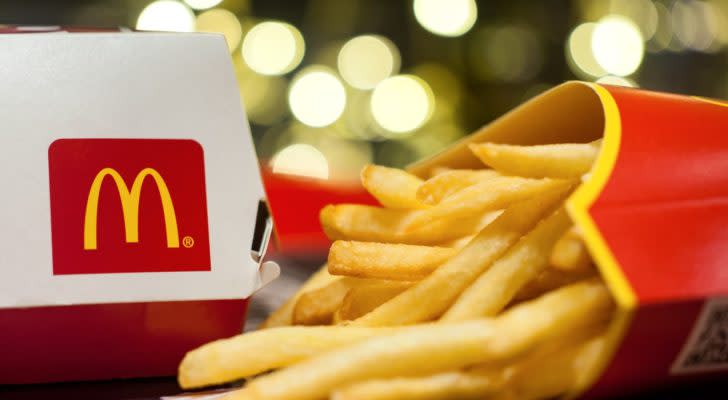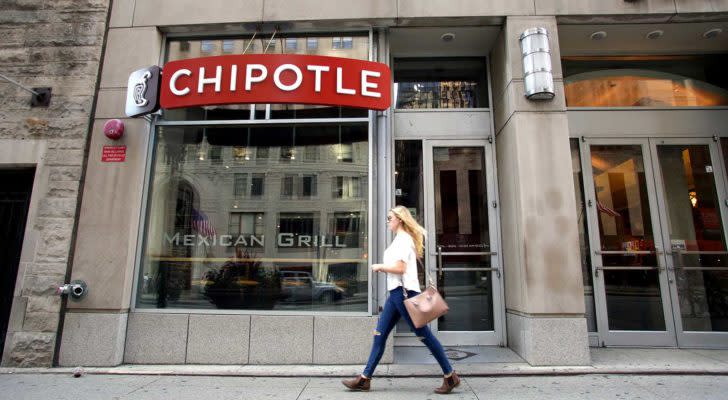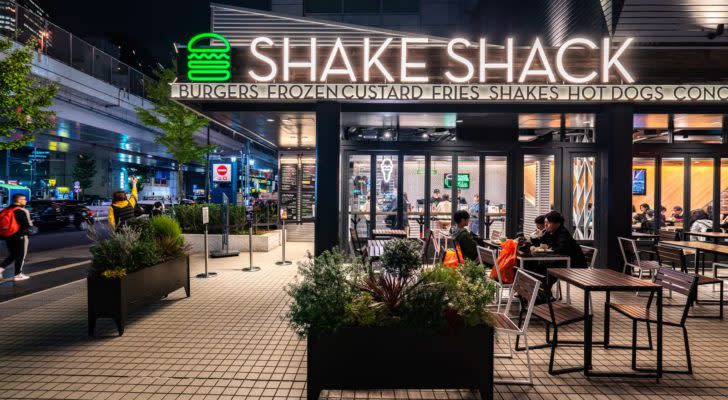7 Restaurant Stocks to Buy for a Big Rebound
The shutdown of non-essential businesses across the United States has created an unexpected and sudden deterioration in the economy. Yet, given what we know about the severity of the novel coronavirus, the world must do anything to stop its spread. And the service industry is getting decimated, along with the tourism and hospitality industry. Restaurant stocks are trading at steep discounts as a result.
Companies that support teleworking may continue working. But industries that require a face-to-face interaction will see a drop in business for now.
The U.S. government approved a monstrously large stimulus package, partly to help consumers pay the rent and buy necessities. The government increased spending while the Federal Reserve eased rates to increase liquidity.
InvestorPlace - Stock Market News, Stock Advice & Trading Tips
But Laura Gonzalez, an associate professor of finance at California State University’s Long Beach campus, said that “the production of processed food may not be sustained within months, and the United States could see a disruption in the market of perishable food. That would alter income in other industries because the price of some essentials may increase at a time of lack of liquidity.”
Investors could look at stocks like Conagra Brands (NYSE:CAG) or Kellogg (NYSE:K) for exposure to the processed and packaged goods market. Conversely, the restaurant sector has stocks trading at steep discounts in light of the shutdown.
When this is lifted, be it in a few or several weeks, investors have seven restaurant stocks to consider buying.
Restaurant Stocks: Restaurant Brands International (QSR)

Source: Shutterstock
Restaurant Brands International (NYSE:QSR) has traded in the $40-$60 range since 2017. The breakout to around $76 last summer proved very short-lived. The company owns Burger King, a global business that performed well last year. In its last quarter, the company said that it watched the lockdown unfolding in China carefully. But since Burger King accounted for roughly 2% of sales, the company did not expect any material downturn in its business.
Burger King added $23 billion in sales for QSR, growing 9% from the year before. Popeyes also enjoyed a strong year. Sales grew an impressive 18% in the year. This is due to the launch of the Chicken Sandwich.
In effect, QSR noticed the strong demand for this product that Chick-fil-A enjoyed. Management said that “for the vast majority of our guests purchasing the sandwich, we saw that they actually spent more on other products than on the sandwich itself, resulting in very healthy check levels and incredibly valuable awareness and trial.”
This year stands in stark contrast to last year’s strong results. Tim Hortons, a popular chain in Canada, will most certainly report a strong drop in sales after many provinces in the nation imposed a lockdown.
At 17 times earnings and the majority of analysts rating the stock a “buy,” QSR stock is due for a rebound. Stock Rover thinks the fair value is $62.41.
McDonald’s (MCD)

Source: 8th.creator / Shutterstock.com
McDonald’s (NYSE:MCD) fell as low as $124.23 recently only to bounce back sharply. The fast-food chain will likely report a strong drop in revenues for the current quarter.
Still, the company adapted to the tougher market conditions by temporarily taking out some items from its menu. This simplifies operations and helps lower the workload for its kitchen staff and crew. The burger giant also closed all of its locations in Ireland and the United Kingdom.
McDonald’s will experience a surge in drive-thru volumes. This will not offset the lost business, but will keep its customers getting the service they demand. Financially speaking, McDonald’s has a healthy balance sheet. Its operating income greatly exceeds its capital expenditures, interest expenses and administrative costs.
To be on the safe side, the company filed a $1 billion borrowing with banks. This will give it a strong cash position and financial flexibility, in case uncertainties worsen due to the pandemic.
Yum! Brands (YUM)

Source: JHVEPhoto / Shutterstock.com
Yum! Brands (NYSE:YUM) held the $100-$110 level until the coronavirus outbreak halted the economy. The stock, which pays a dividend yielding 2.8%, sees the light at the end of the tunnel. In its filing, the company wrote that “we have seen early signs of sales recovery in markets that were first impacted by COVID-19, although there can be no assurance of continued improvement.”
At the time of filing, Yum forecast same-store sales will fall in the mid to high single digits. Beyond the quarter ended March 31, the company is not positioned to give investors a forecast.
To preserve its cash, Yum suspended its stock buyback program. Instead, it will invest in the company. It will also spend on things that maximize the health and well-being of its staff while they serve customers.
At a price-earnings of around 17 times, YUM stock is a good turnaround play for patient investors. On average, analysts have a $97.13 price target on Yum! Brands.
Conversely, readers may assume a 7% discount rate and a modest 2% perpetuity growth rate in a 5-year discounted cash flow growth exit model. In that scenario, YUM stock is worth $84.25.
Starbucks (SBUX)

Source: Grand Warszawski / Shutterstock.com
Shares of Starbucks (NASDAQ:SBUX) are down sharply because of the pandemic affecting its business. Yet as China sets to end its lockdown in its Hubei province in early April, Starbucks may start to see business bouncing back in the region.
The return of customers is hardly assured. But loyal customers will likely come back when businesses return to normal and people begin commuting to work.
SBUX stock held up well during the massive selloff in restaurant stocks because the market expects the business to snap back. The market’s optimism is undermined if the lockdown plays out longer. This delays the assumption on a return to normal life in China or in other countries.
For now, investors should brace for a sharp drop in earnings, assuming at least 50% of the stores are closed. The drive-thru or delivery-only locations will soften the overall drop. In the months following a re-opening, independent coffee shops are not likely to survive. This will give Starbucks a chance to grow its market share.
Analysts have an average price of $81.45 on SBUX stock. Conversely, investors may assume a 5.3% compounded annual growth rate in revenue. This implies SBUX stock is worth $74.
Domino’s Pizza (DPZ)

Source: Ken Wolter / Shutterstock.com
Domino’s Pizza (NYSE:DPZ) is hiring around 1,000 more staff across more than 100 stores in Chicago. This signals that the company has a strong understanding of the neighborhood it serves. By positioning itself as a favorite restaurant option, Domino’s has the opportunity to grow its market share.
DPZ stock trades at a high P/E of 35 times, which is justified given the expected growth ahead.
Before the global slowdown, the company grew U.S. same-store sales by 3.4% from the previous year. Its international business grew by 1.7%. Chances are good that as a delivery and carry-out business, the order rates will only grow in this tough economic period.
Chipotle Mexican Grill (CMG)

Source: Northfoto / Shutterstock.com
Chipotle Mexican Grill (NYSE:CMG) shares lost almost half their value before rebounding sharply last week. Valuations for this popular restaurant are still unfavorable on a price-earnings basis. The company signed a deal with Uber Eats to provide delivery service for its customers. The company said that this will expand delivery and increase access to “real” food.
Now that the new normal requires many to stay at home, Chipotle will deliver food to the customer’s doorstep. Chris Brandt, its chief marketing officer, said that “We’re excited to expand our delivery footprint through a partnership with Uber Eats, which will make it even easier for fans to get the food they love without leaving the house.”
The 24 analysts who cover CMG stock have an $858.62 price target. Conversely, compared with its peers, the stock does not have much upside on a multiples valuation model. Either way, Chipotle is a popular restaurant destination. This addition on my list of restaurant stocks to buy will thrive regardless of market conditions.
Shake Shack (SHAK)

Source: JHENG YAO / Shutterstock.com
Shake Shack (NYSE:SHAK) withdrew its financial guidance and shifted to a “to-go” model. Customers may order in the restaurant, online at its website or use the Shack App for pickup. Investors should notice that the stock fell into a prolonged downtrend over the last year. Valuations are unfavorable and the current headwind will slow its growth.
In the last year, Shack system-wide sales grew 30% year-over-year to $895.3 million. Revenue grew 29% to $594.5 million while same-store sales grew 1.3%. Adjusted EBITDA improved by 11% YOY to $81.8 million. For 2020, the revenue growth momentum will end. But the business should rebound quickly.
Investors cannot predict when the economy will return to normal. Even so, strong brand awareness in its many markets in the U.S. will help Shake Shack’s business snap back. For now, its integrated delivery strategy with Grubhub (NYSE:GRUB) will add more value and generate more business leads.
Chris Lau is a contributing author for InvestorPlace.com and numerous other financial sites. Chris has over 20 years of investing experience in the stock market and runs the Do-It-Yourself Value Investing Marketplace on Seeking Alpha. He shares his stock picks so readers get original insight that helps improve investment returns. As of this writing, the author did not hold a position in any of the aforementioned securities.
More From InvestorPlace
The post 7 Restaurant Stocks to Buy for a Big Rebound appeared first on InvestorPlace.
